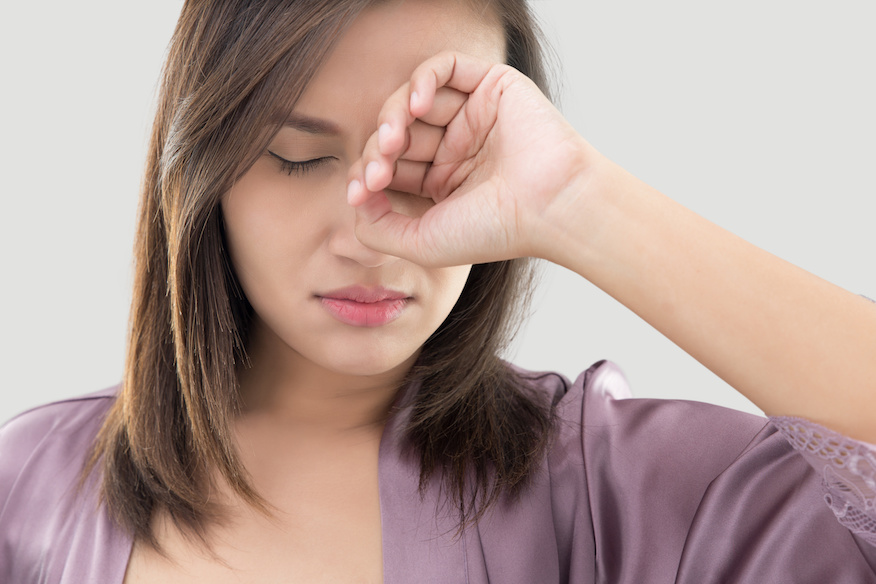
You look in the mirror one morning and suddenly notice a small bump on your eyelid. What is it? What should you do about it? Is this skin issue going to stick around and mar your appearance? If you’ve ruled out pesky pimples and head trauma, there are quite a few possibilities as to what that surprise eyelid bump might be.
Fortunately, you can breathe a sigh of relief here: Most of the possibilities are common, temporary, and benign. And they won’t affect your eyesight, either. But still, some of them will hurt or bother you, and may need treatment. Plus, it’s important to know what that bump really is, and why it’s suddenly made itself cozy on your eyelid. Let’s take a look at a few common eye bumps… and how you might be able to tell which is which.
Mystery Eye Bump 1: Chalazia
When your upper or lower eyelid gets inflamed, it can result in the growth of a tiny cyst (usually no bigger than 8 millimeters). A chalazion is the official name for this baby cyst. Basically, they happen when the sebaceous glands on your eyelid get clogged. These glands aren’t like the ones that make the rest of your face and skin only, though. They’re called meibomian glands, and they produce a specific type of sebum that lubricates our eyes. When they become obstructed, a small lump can form.
Chalazia may feel soft and full of fluid, but they can also seem firm to the touch. These types of eyelid bumps aren’t generally painful, and should go away within a few weeks. If you’ve had one before, or if you suffer from rosacea, you may be at higher risk for additional chalazia.
Mystery Eye Bump 2: Styes
A stye (or sty) is also called a hordeolum, and these nasty buggers are abscesses that may cause redness, tenderness, and swelling along your eyelid. If you’ve ever had a stye, you’ll probably recognize it immediately — and know that they’re really not fun.
If you haven’t, know that styes make the edges of your eyelid red, tender and swollen, and that in some (though severe) cases, they can grow up to three inches in diameter! Styes are usually a result of a staphylococcal bacterial infection, and they are contagious. They can look a lot like those chalazion cysts we mentioned above, but styes are typically pretty painful. They eventually develop a yellow point or head, and will then spontaneously drain, which some people may confuse for a pimple but they’re very different!
A stye should resolve itself within a week or two, though some may require treatment by a physician. In the meantime, don’t pop it and don’t touch it. Keep your eyes and hands as clean as possible, and don’t share sheets or towels with anybody else.
Mystery Eye Bump 3: Milia
Does your eyelid bump look like a raised white dot? Kind of like a super tough, hard whitehead? It might be a milium. Milia are also a type of cyst, and they’re filled with laminated keratin. Come again? Basically, these tiny little bumps are filled with the same fibrous protein that makes up our hair and nails, but the protein accidentally got trapped under your skin.
These little cysts are tiny — just 1-2 mm — and they’re firm. They can pop up all by themselves, or in clusters. They won’t hurt, but they can be irritating, and the look of them does tend to bother some people.
Several specific types of milia exist, some of them erupt spontaneously from sweat glands or show up after the skin has been damaged. Milia eye bumps can be seen in newborns, teens, and adults, and they look a lot like baby acne or whiteheads. Milia should disappear on their own, but for some, they’ll stick around. You can have them removed, but a dermatologist should be doing the procedure, not you!
Mystery Eye Bump 4: Xanthelasmas
If your eyelid bump looks more like a yellowish, spreading plaque, you may be experiencing a xanthelasma. Xanthelasmas are soft to the touch and not painful, and they’re filled with cholesterol. A xanthelasma could be a sign that you have hyperlipidemia, which is a condition where someone has too many lipids, or fats, in their blood. In fact, about half of xanthelasma sufferers have hyperlipidemia. Xanthelasmas are benign (that’s just a fancy way of saying harmless), but most of the time they won’t go away on their own. If you lower your cholesterol and triglyceride levels, that may help them resolve over time. Generally, xanthelasmas tend to affect middle-aged and older adults.
It is possible to remove xanthelasmas — Dr. Sandra Lee (aka Dr. Pimple Popper) performed a pinch excision for a patient, which involves using local anesthesia and gently grasping the skin with forceps and then clipping off the growth. You can watch the procedure below!
It’s important to know that unfortunately, even complete removal of these lesions doesn’t guarantee that a person won’t develop new ones in the future.
Mystery Eye Bump 5: Syringomas
These are a type of papule that crop up around our sweat ducts, which means they can be found on the eyelids or on other parts of the body, such as on our chest or neck. They’re about 1-3 millimeters in diameter and the bump is usually yellowish or skin-colored.
Syringomas may itch when you sweat but are otherwise asymptomatic — meaning they won’t bother you or show any other symptoms. Because of the way they look and feel, they can be easily confused with xanthelasmas or milia. You’ll find them rooted in the deeper layers of the skin, and they tend to show up more in women than in men. Syringomas typically appear spontaneously (great, we know) but as with the other conditions here, they don’t require treatment except to reduce unsightliness.
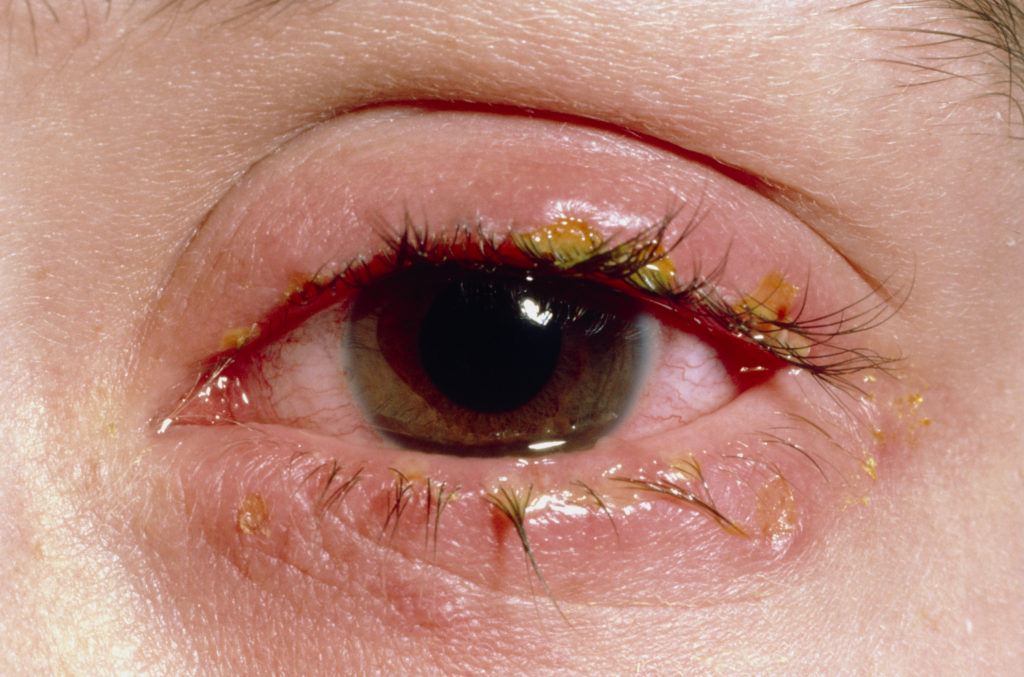
Courtesy of merckmanuals.com
Mystery Eye Bump 6: Blepharitis
If your eyelids are red, itchy and irritated, you could have this common eyelid inflammation disorder. People end up with blepharitis because of either bacteria or a skin condition that affects the skin on or around their eye, such as dandruff of the scalp or rosacea. When these bacteria (which are actually commonly found on the face and lids) multiply or the lid area gets irritated by their presence, that’s when infection can occur.
Blepharitis affects people of all ages, but it’s not contagious and it won’t permanently damage your sight. The bad news is, blepharitis usually causes a gritty, burning sensation in the eyes, and for some people, it can also cause itching, redness, swelling, dry eyes or crustiness. Yuck indeed.
Be warned: touching or rubbing your eye if you’ve got blepharitis can cause a secondary infection, so keep your hands away from your eyes! You can help alleviate or prevent the condition by regularly washing your face, eyelids, and scalp, and using a warm compress to soak your eyelids. If it’s a bacterial infection that’s causing (or cropped up with) your blepharitis, a doctor may choose to prescribe antibiotics.
The Bottom Line on Mystery Eye Bumps
As you can see, most of these common eyelid conditions resolve themselves within a few weeks and don’t typically require treatment. Generally, hot compresses can help stimulate blood flow to hasten the healing process, and heading to your doctor for antibiotics and steroids may also help. If you’d like to see a dermatologist for removal, treatment options may include chemical peels, lasers, cryotherapy, or simple evacuation. Of course, everyone’s body (and eyelids!) are different, so if you’re feeling like you’ve got one of these bumps but it’s bothering you or not going on away on its own, it’s always best to make an appointment with a trusted dermatologist.
It’s also super easy to misdiagnose eyelid lesions, especially if you’re doing it yourself. Often, eye bumps are confused with other types of skin problems, and you don’t want to treat something it turns out you don’t have. So, again, if they recur, or remain resistant to treatment, please visit a doctor and ask to have a histopathological diagnosis done, to make sure they aren’t dangerous to your health.
Dr. Brittany Blaise, a dermatology resident at Southern Illinois University School of Medicine (SIU), helped contribute to the accuracy of this story.



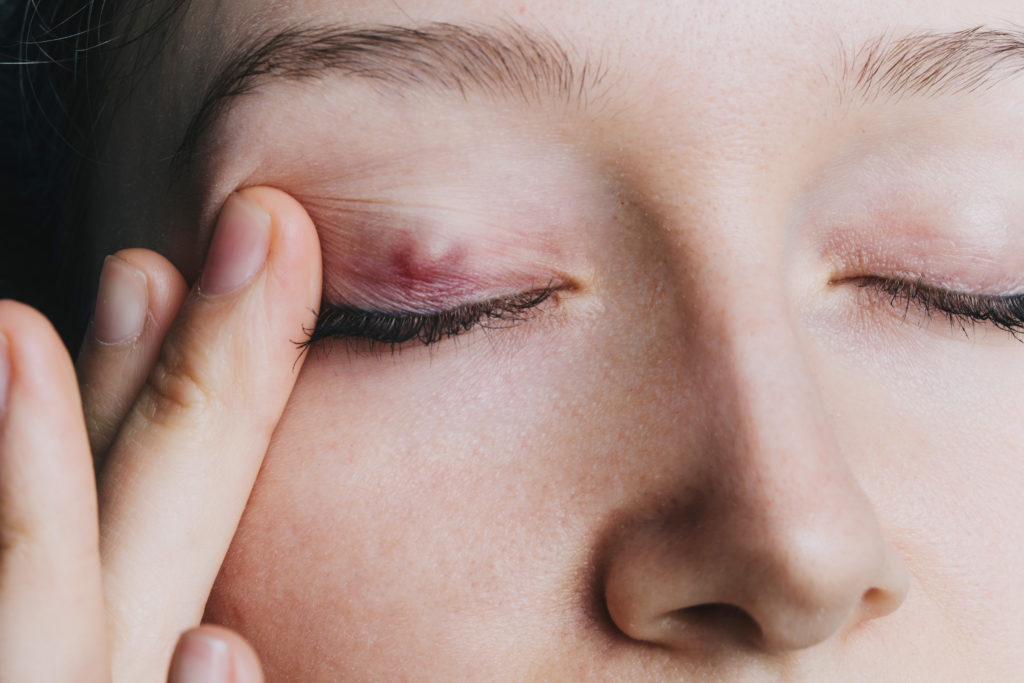
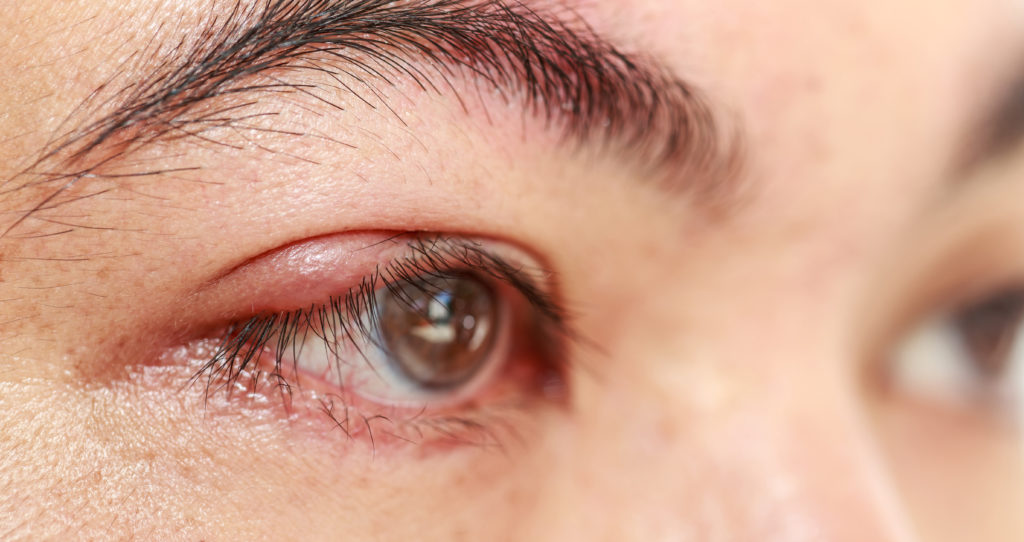
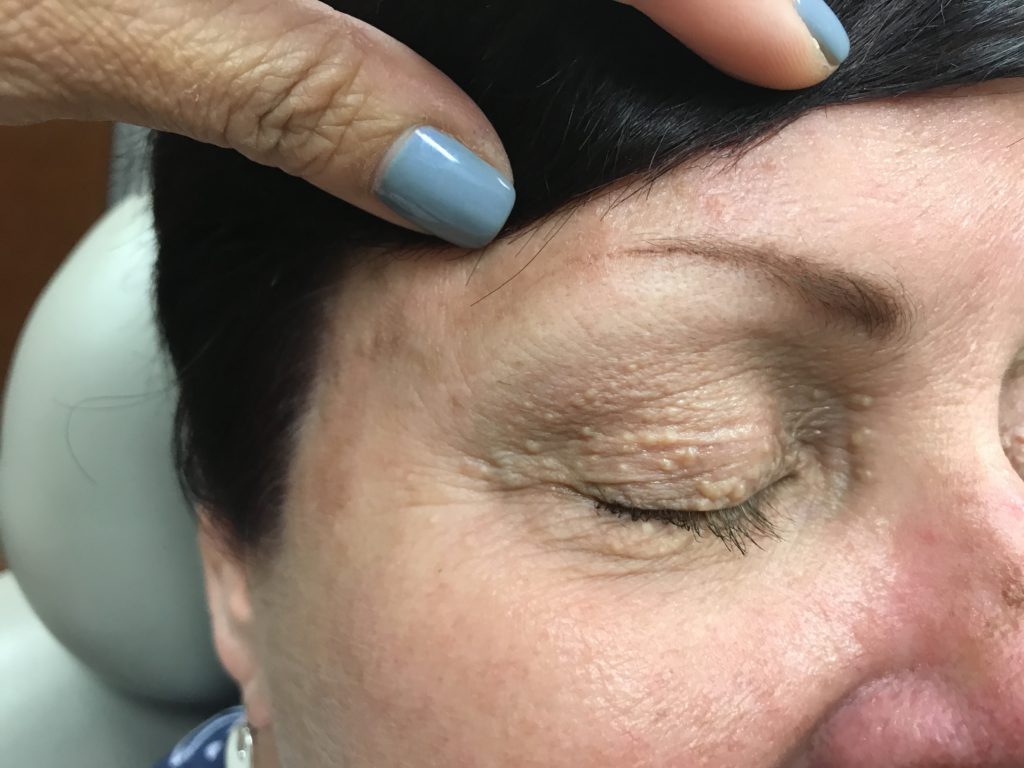
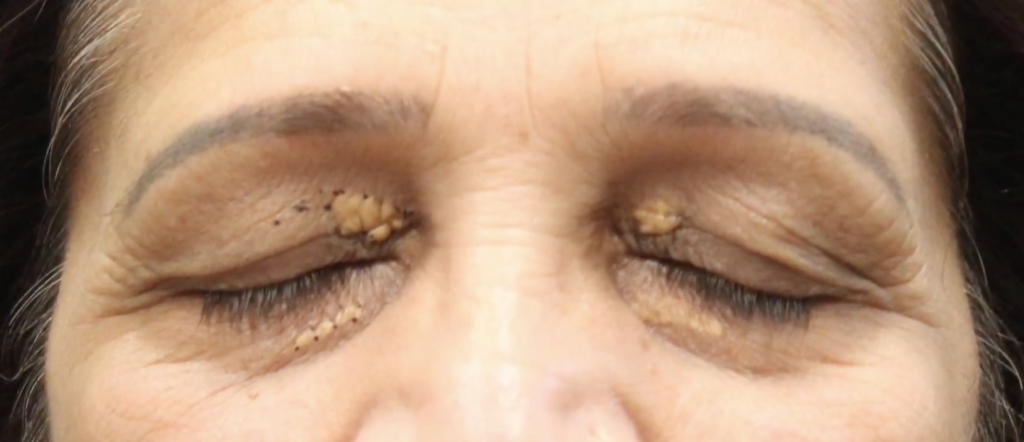
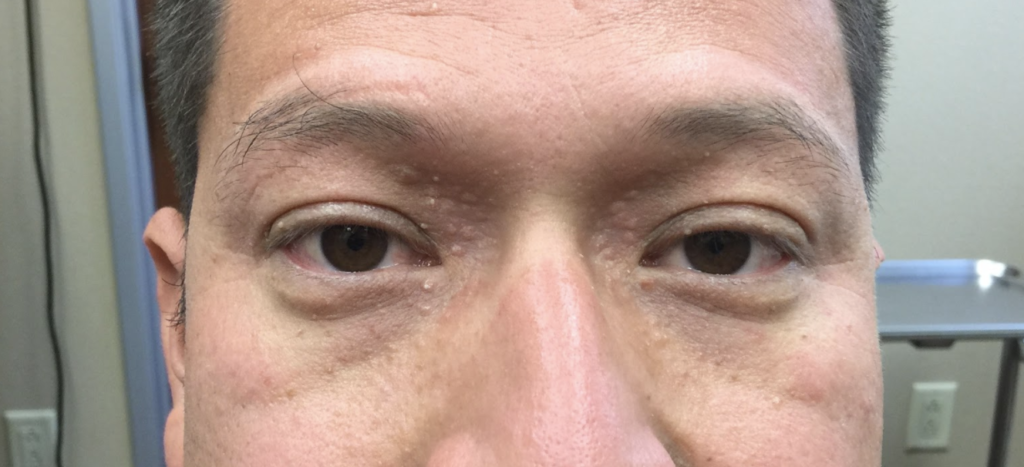


Senior year of college I met one of my greatest foes. The chalazion! My pcp prescribed an antibiotic eye drop as a precaution until I could get in with my normal ophthalmologist. Turns out I was allergic to said drops. My eye swole shut and the chalazion grew bigger by the day. My ophthalmologist gave me another drop and told me to apply warm wet compresses. He didn’t recommend removing it as it would leave a scar. I worked a few hours a week as a nanny and modeling inventory/ managing a boutique. I wore an eye patch to get around explaining what was going on. 😂 In the end the skin softened enough and it burst. It was a bloody mess….. and I still have a scar on my eye lid and small patch where my eye lashes never grew back. Very humbling experience! Best part of the whole thing was my Mom asking what the doctor said and I was so overwhelmed and upset about looking like Quasimodo that I told her it was a chinchilla!